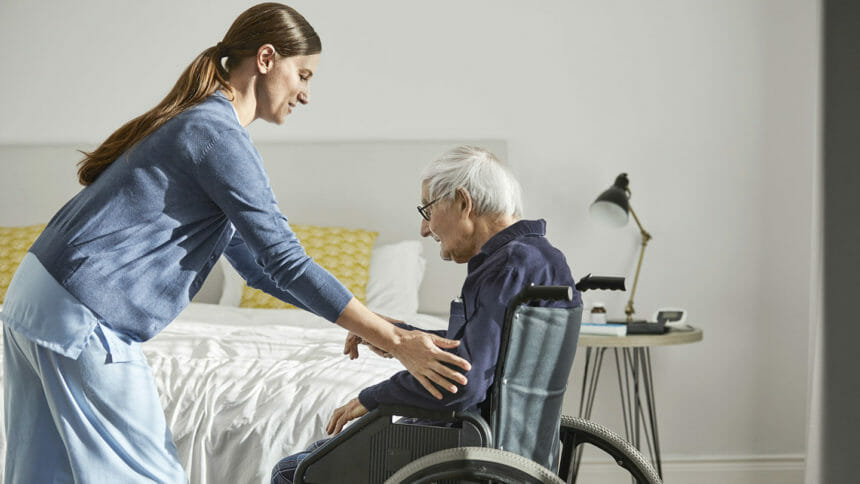
The opinions of nursing home staff members on appropriate use of restraints in resident care can shed light on where improvements need to be made, according to the authors of a new study.
Investigators examined data from a sample of 292 units across 86 Swiss nursing homes to gauge the impact of surveillance technology and staff opinions on appropriateness of restraints such as bed rails, trunk fixation or seating options that prevent standing.
The researchers theorized that surveillance technologies could help to reduce and replace more restrictive forms of restraints, such as belts, to allow residents to be more safely autonomous. But their theory was not supported by the evidence. Fully 11% of residents across all of the participating facilities were physically restrained, they found, and there was no significant link between use of restraints and the prevalence of surveillance technology.
The value of staff opinions
The findings did show, however, that residents were more likely to be restrained when staff members reported inappropriate use of physical restraints. These results suggest not only that staff is aware when restraints are overused, but that staff members’ opinions may be a valuable source of information in efforts to reduce overuse of these safety tools, the authors wrote.
In the United States, the use of surveillance technologies such as cameras in nursing homes is increasing, and some think the technology will reduce the use of restraints, the authors reported. However, “these developments are not evidence-based, and this study does not support the use of such technology to reduce restraints,” they concluded.
The study was published in the Journal of the American Geriatrics Society.
Related articles:
Physical restraints in nursing facilities; a how-to from an expert
Telemedicine linked to fewer hospital transfers and reduced restraints use in LTC during pandemic



